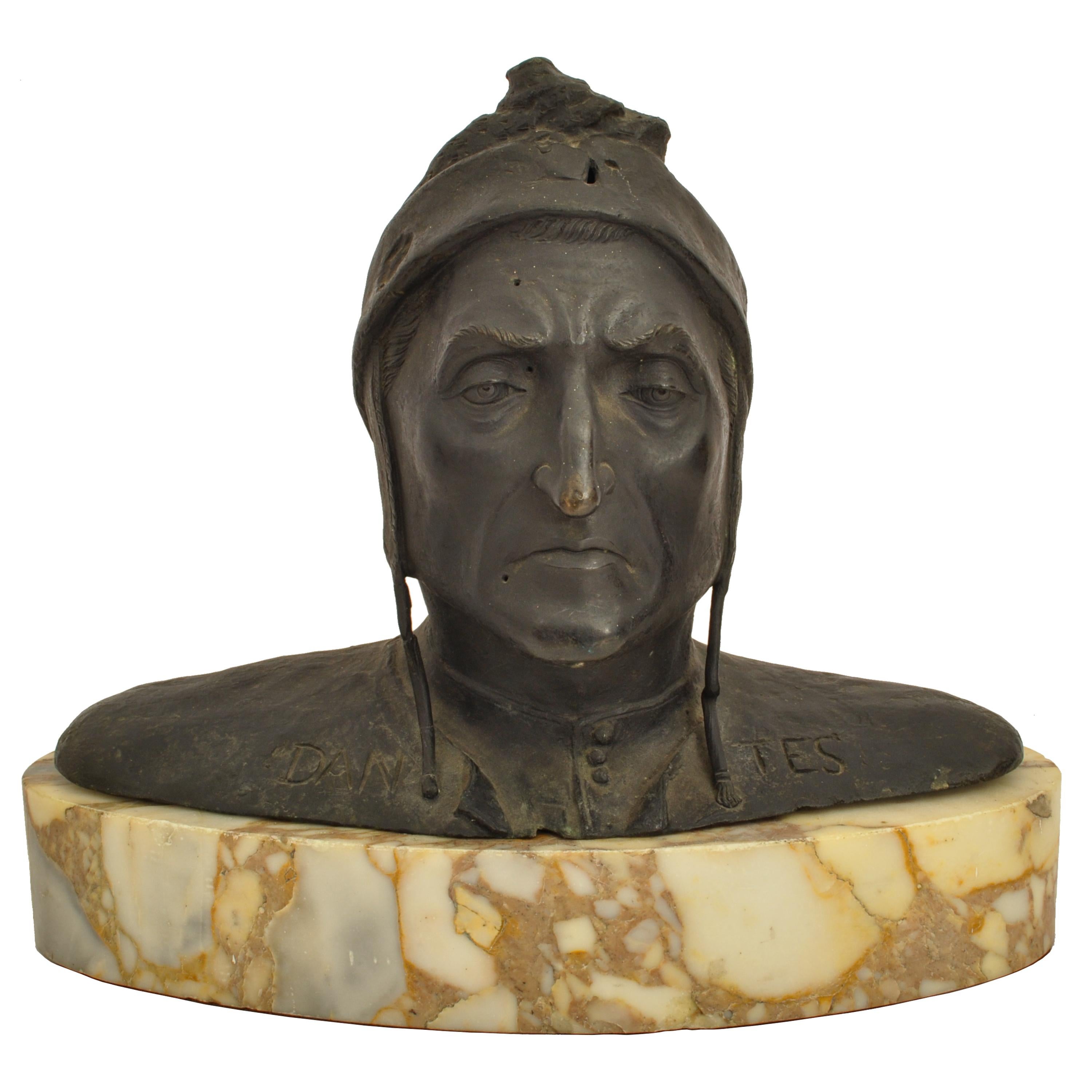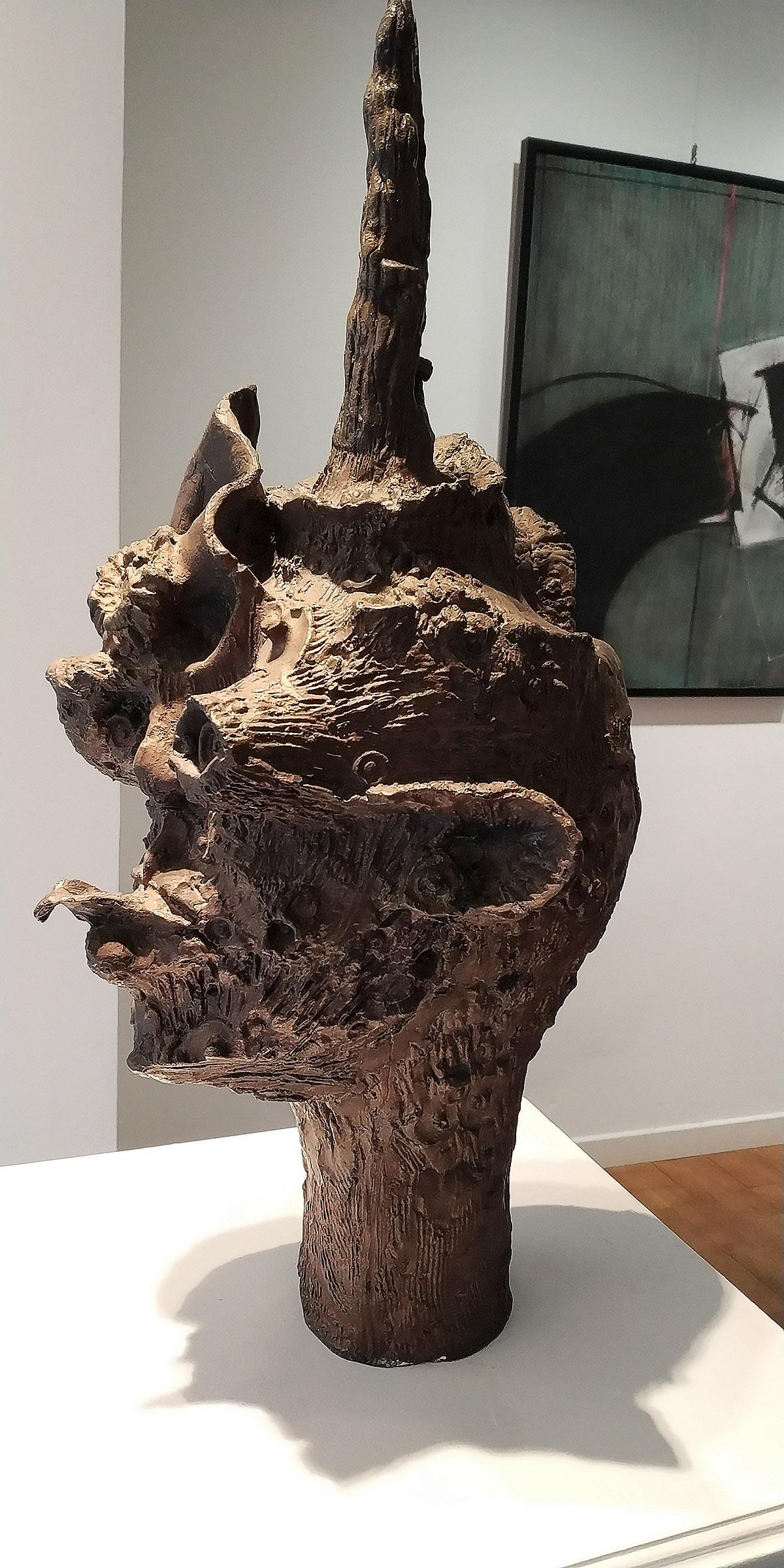Items Similar to Girardon’s Equestrian Portrait of Louis XIV
Want more images or videos?
Request additional images or videos from the seller
1 of 8
Girardon’s Equestrian Portrait of Louis XIVCirca 1820
Circa 1820
About the Item
King Louis XIV, one of France's greatest monarchs, sits confidently astride a prancing steed in this bronze equestrian statue. The extraordinary work is a reduction of the portrait of the Sun King by François Girardon, one of the most noted and influential sculptors of the period. Looking back to the great masterpieces of antiquity, Girardon took his inspiration from the seminal ancient Roman marble of Marcus Aurelius, now in the Musei Capitoline (Rome). Louis XIV is thus portrayed here as a conquering Roman hero, his costume adorned with many neoclassical motifs, hand outstretched in a gesture of command. The result is an imposing royal portrait of power and absolute authority that pays homage to one of the most important sovereigns in French history.
It was in 1685, at the very height of his rule, when Louis XIV commissioned the monumental bronze of himself from the great Girardon. As sculptor to the king, Girardon was a key figure in the decoration of the gardens at the Château de Versailles, and he was later commissioned to complete several important royal projects, this equestrian sculpture included. The bronze was erected in the Place Louis-le-Grand (now the Place Vêndome) in 1699, but was regrettably destroyed less than a century later during the French Revolution in 1792. One small section of the original does remain — the left foot of the king, which is now held in the Musée Carnavalet (Paris).
Luckily, Girardon recognized the importance of his creation and executed four bronze reductions of the sculpture. Today, three of these four can be found in the British Royal Collection (London), the State Hermitage Museum (St. Petersburg) and the Louvre. The example in the Louvre is the only signed reduction cast by Girardon.
Since the 17th century, other reductions of the work has been created, including the present bronze, which dates to the late 19th century. Parisian bronziers such as Henri Dasson and Alfred Beurdeley were among the important makers who re-created the sculpture during this period, and this could have come from their workshops. It is a stunning ode to this great monarch, reflection the glory of his reign and the glory of France.
The archetype of absolutism in royalty, the 72-year reign of Louis XIV, the longest in European history, not only enhanced the power of the monarchy, but catapulted France to become the most powerful nation in Europe. Louis XIV built Versailles during his reign to reflect the grandeur of the King and his court which ruled under the belief, "One King, One Law, One Faith." The period during which he served as King of France became known as "The Age of Louis XIV."
Circa 1820
Sculpture: 36" wide x 19" deep x 43" high
Base: 37 1/4" wide x 25" deep x 30" high
Total: 37 1/4" wide x 25" deep x 73" high
- Creation Year:Circa 1820
- Dimensions:Height: 43 in (109.22 cm)Width: 36 in (91.44 cm)Depth: 19 in (48.26 cm)
- Medium:
- After:François Girardon
- Period:
- Condition:
- Gallery Location:New Orleans, LA
- Reference Number:
About the Seller
5.0
Vetted Seller
These experienced sellers undergo a comprehensive evaluation by our team of in-house experts.
Established in 1912
1stDibs seller since 2013
15 sales on 1stDibs
Typical response time: 4 hours
- ShippingRetrieving quote...Ships From: New Orleans, LA
- Return PolicyThis item cannot be returned.
More From This SellerView All
- CoupleBy Agustín CárdenasLocated in New Orleans, LAInfused with a crisp modernity and subtle sensuality, this bronze sculpture by Cuban-born artist Agustin Cárdenas is an exceptional example of late-2...Category
20th Century Modern Figurative Sculptures
MaterialsMarble, Bronze
- Winston Churchill Artist Proof Bust by Ivor Roberts-JonesBy Ivor Roberts-JonesLocated in New Orleans, LAIvor Roberts-Jones 1916-1996 British Sir Winston Churchill Artist Proof Bronze with a green patina One of the greatest leaders of the modern world, Winston Churchill is among the...Category
20th Century Figurative Sculptures
MaterialsBronze
- Sir Winston Churchill Memorial By Ivor Roberts-JonesBy Ivor Roberts-JonesLocated in New Orleans, LAIvor Roberts-Jones 1916-1996 | British Sir Winston Churchill Memorial Bronze This exceptional and iconic sculpture of Sir Winston Churchill is the original maquette for the renown...Category
20th Century Academic Figurative Sculptures
MaterialsBronze
- Arabesque on Right Side, Right Hand Close to Earth, Left Arm OutsideBy Edgar DegasLocated in New Orleans, LAOne of a series of sculpted dancers created by the incomparable Edgar Degas, this exceptional bronze exudes all of the expressivity one expects from this 20th-century great. Degas captures the essence of his model in the graceful work, as she strikes a particularly difficult pose of the arabesque. The dancer's features have been manipulated and simplified, executed in a manner that seems almost as if one of Degas' Impressionist canvases has come to life. Degas was obsessed with capturing the dancer in motion throughout his career. He rendered their grace and movement in oil, pastel, pencil, chalk and wax - in fact, of the seventy-four wax sculptures created by Degas during his lifetime, forty of them depicted dancers. Seven of these belong to his series that capture the various forms of the arabesque, and the present work is included among them. It details one of the most difficult and animated poses of the ballet. Degas’ dancer is precariously posed in a study of balance and motion, one leg gracefully thrust into the air as she tilts her body down towards the earth and extends her arm forward. The sense of her movement is perfectly captured in the extraordinary work, as well as the fluid lines of her body. The bronze is a sought-after rarity in terms of Degas’ sculptures. Not only are his dancers the most desirable of his work, but this bronze is also distinguished by the fact that it is a Valsuani bronze, meaning it faithfully records Degas’ wax version’s pose as it appeared at the time of its creation. Most Degas' bronzes that are found on the market were cast by Hébrard – these serialized bronzes are surmoulages, or “aftercasts,” that were cast from the modèle bronzes currently in the Norton Simon Museum (Pasadena). Because these bronzes are second generation, they are smaller and far less detailed that the current bronze. This example, however, was cast by Valsuani from a plaster that was taken directly from Degas’ waxes, according to scholarship by the art historian Dr. Gregory Hedberg. These plasters were created by Degas’ sculptor friend Albert Bartholomé shortly after Degas completed his wax figurines. Thus, they record the earliest versions of Degas’ wax sculptures, before they were damaged by time or handling, and before Degas himself altered the works. The Hébrard bronzes...Category
20th Century Impressionist Figurative Sculptures
MaterialsBronze
- Bronze of Pluto Abducting Proserpine after François GirardonLocated in New Orleans, LAAfter François Girardon 1628-1715 French Pluto Abducting Proserpine Bronze This High Baroque period composition captures the famed narrative of Pluto and Proserpine from Roman mythology. The late 17th-century patinated bronze, created after François Girardon's marble composition, captures the very moment that Pluto seizes Proserpine. The anguished goddess reaches skyward, attempting to escape the god’s grasp while Pluto’s stoic face betrays his knowledge that his ploy will succeed. This pivotal moment in the mythological tale has captured the imagination of many art historical greats, from Bernini to Rubens. François Girardon’s version of the climax demonstrates incredible finesse and artistry, modeled expertly in bronze in the present work by a later sculptor. The statue brings a twist of intertwined bodies into a dynamic frenzy, paralleling the tension of the legendary story. In ancient Roman mythology, Proserpine, the beautiful daughter of Ceres — known as Persephone in Greek mythology — was picking flowers in the fields when she was suddenly abducted by Pluto, the god of the underworld, and taken to his kingdom. Consumed with grief, her mother Ceres, the goddess of agriculture, scorches the earth, stopping the growth of grain and fruit. Jupiter attempts to intervene and secure Proserpine’s return to earth, negotiating a compromise with Pluto and the Fates that allows Proserpine to be released for part of the year before returning to Pluto’s underworld. Proserpine’s journey back and forth is an allegory for the changing seasons; when Prosperine is with her mother, the earth warms and provides bountiful harvests. Upon her annual return to the underworld, however, the earth once again becomes cold and barren. After returning to France after years of training in Rome, François Girardon quickly rose to become one of the greatest artists in France. He was elected a member of the Académie Royale de Peinture et de Sculpture in 1657 and would become Chancellor of the Royal Academy in 1695. The artist was approached frequently for royal commissions and Girardon’s Pluto was originally commissioned by Louis XIV for the gardens at his Palace of Versailles. It was one of four monumental marble groups intended to decorate the corners of Charles Le Brun’s never completed garden at the chateau, the Parterre d’Eau. Each group of three figures symbolized one of the four elements: earth, air, fire and water. Pluto’s association with hell made him the apt...Category
Early 18th Century Baroque Figurative Sculptures
MaterialsBronze
- Married Love by Oscar NemonLocated in New Orleans, LAOscar Nemon 1906 - 1985 Croatian Married Love Signed “Nemon” (on reverse) Bronze resin with green patina This rousing and sentimental sculpture, commis...Category
20th Century Figurative Sculptures
MaterialsBronze
You May Also Like
- Surreal Figurative Sculpture, "Lovers"Located in San Diego, CAThis is a one of a kind original bronze surrealist figurative sculpture by San Diego artist, Debbie Korbel. Its dimensions are 41" x 42" x 34". A certifi...Category
2010s Surrealist Figurative Sculptures
MaterialsBronze
- Antique Italian Grand Tour Bronze Marble Bust Sculpture Dante Alighieri 1880Located in Portland, ORA good antique Italian Grand Tour Bronze and marble bust of Dante Alighieri, circa 1880. The bronze is most likely Florentine and mod...Category
Late 19th Century Italian School Figurative Sculptures
MaterialsMarble, Bronze
- WHITE HINGED POEM DRESS,By Lesley DillLocated in New York, NYLESLEY DILL WHITE HINGED POEM DRESS, 1994 patinated bronze 55 x 37 x 30 in. 139.7 x 94 x 76.2 cm. Edition of 4Category
1990s Contemporary Figurative Sculptures
MaterialsBronze
- Growing in a Fragmented LandscapeBy Jennyfer StratmanLocated in Los Angeles, CAThere is a metaphorical interplay between the natural imagery international artist, Jennyfer Stratman, uses and its multiple meanings. While the human figure features strongly, it is...Category
21st Century and Contemporary Contemporary Figurative Sculptures
MaterialsMetal, Bronze, Enamel, Steel, Copper
- Unicorn - bronze sculpture - Salvador Aulestia (1915-1994)Located in Milano, MI"TERAPHIM" Salvador Aulestia's Teraphim exhibition and simultaneous video presentation of the Teraphim exhibition held in front of Leonardo da Vinci's "Last Supper" on Corso Magenta...Category
1970s Modern Figurative Sculptures
MaterialsBronze
- Body Corporate Gold, Contemporary Bronze SculptureLocated in WOOLLAHRA, AUStephen Glassborow was born in Hammersmith, England and studied sculpture at the Brighton College of Art, before becoming a permanent resident of Australia in 1983. He is now one of ...Category
2010s Art Deco Figurative Sculptures
MaterialsBronze
Recently Viewed
View AllMore Ways To Browse
Louis Style Art
Louis Xiv Antique
Antique Key Art
Antique Sculptures London
Francois 1
Antique Bronze Portrait
Antique Equestrian Equestrian
Antique Equestrian
Ancient Roman Marble
Equestrian Original
Equestrian Gold
King Louis Xiv
Chateau De Versailles
Antique Monarch
Ancient Roman Figure
King Louis Marble
Equestrian Bronze
British Royalty




